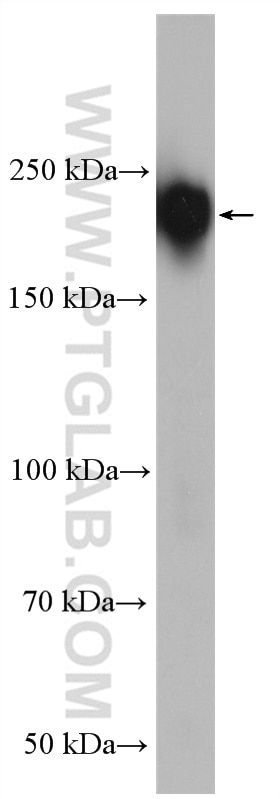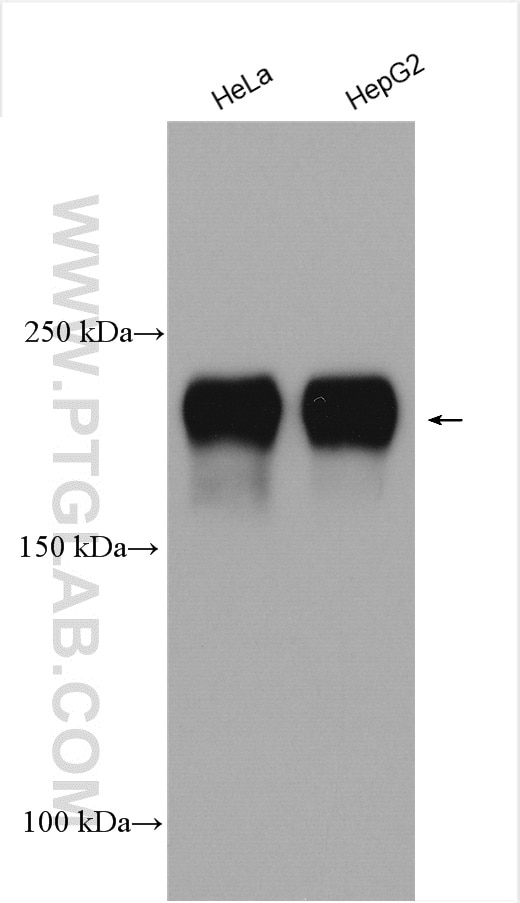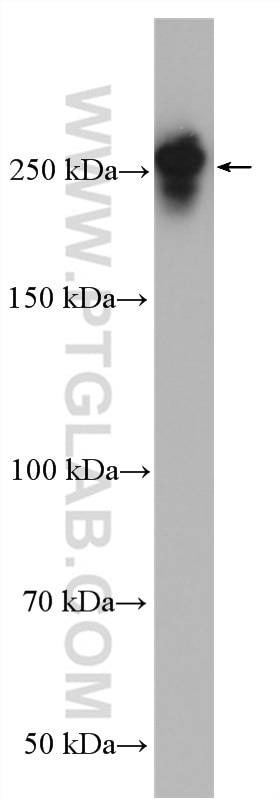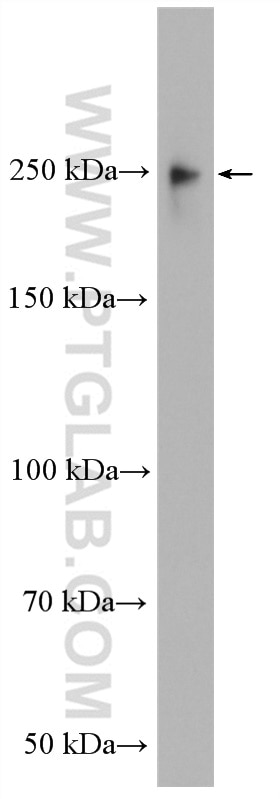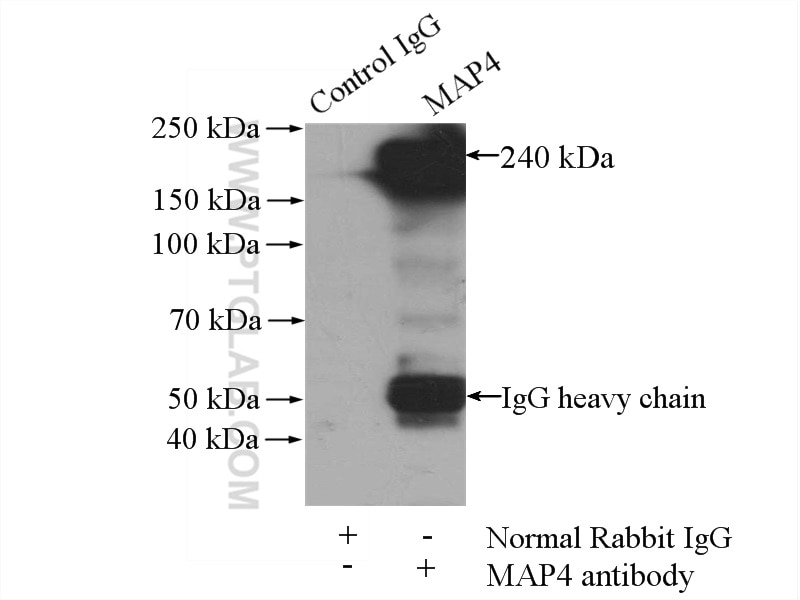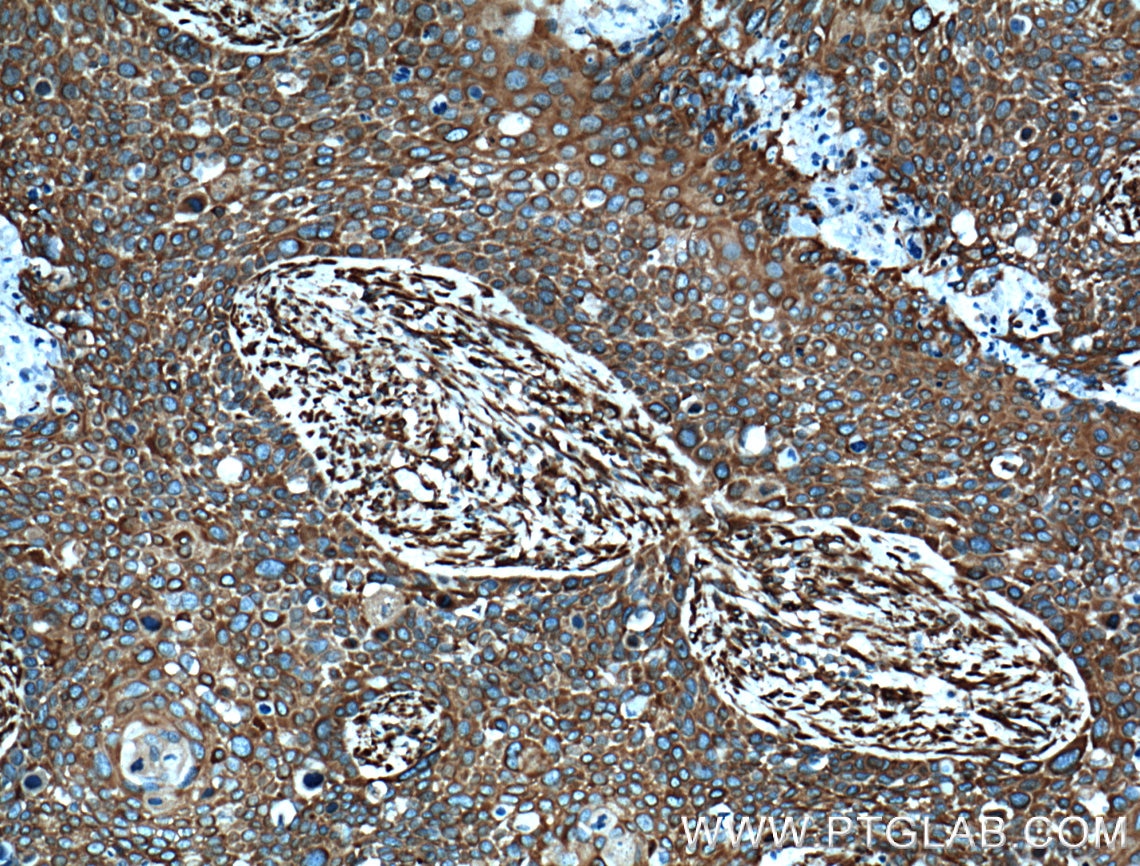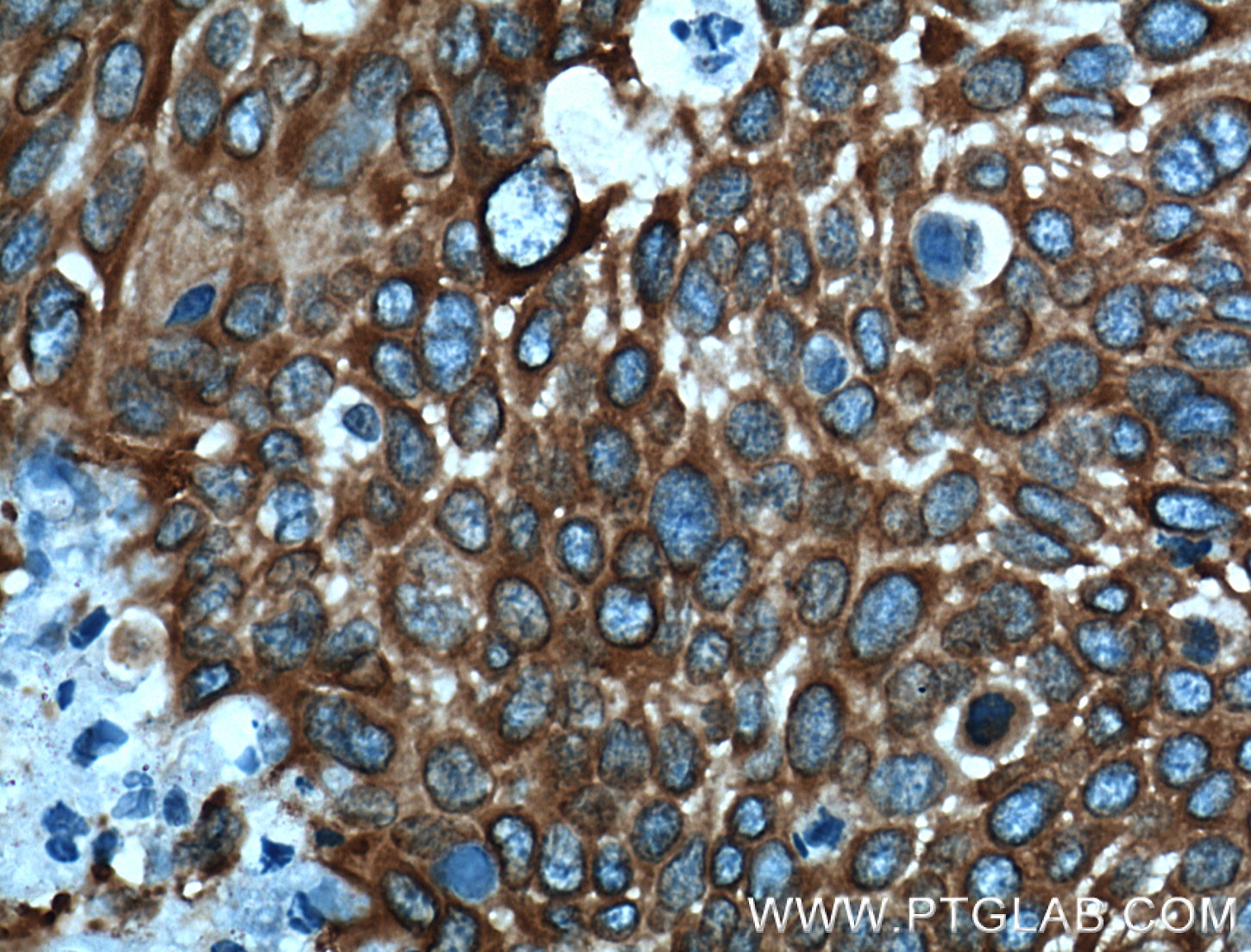Tested Applications
| Positive WB detected in | HeLa cells, HEK-293 cells, C6 cells, C2C12 cells, HepG2 cells |
| Positive IP detected in | HEK-293 cells |
| Positive IHC detected in | human oesophagus cancer tissue Note: suggested antigen retrieval with TE buffer pH 9.0; (*) Alternatively, antigen retrieval may be performed with citrate buffer pH 6.0 |
Recommended dilution
| Application | Dilution |
|---|---|
| Western Blot (WB) | WB : 1:500-1:3000 |
| Immunoprecipitation (IP) | IP : 0.5-4.0 ug for 1.0-3.0 mg of total protein lysate |
| Immunohistochemistry (IHC) | IHC : 1:50-1:500 |
| It is recommended that this reagent should be titrated in each testing system to obtain optimal results. | |
| Sample-dependent, Check data in validation data gallery. | |
Published Applications
| KD/KO | See 4 publications below |
| WB | See 13 publications below |
| IHC | See 6 publications below |
| IF | See 2 publications below |
| IP | See 1 publications below |
Product Information
11229-1-AP targets MAP4 in WB, IHC, IF, IP, ELISA applications and shows reactivity with human, mouse, rat samples.
| Tested Reactivity | human, mouse, rat |
| Cited Reactivity | human, mouse, rat |
| Host / Isotype | Rabbit / IgG |
| Class | Polyclonal |
| Type | Antibody |
| Immunogen | MAP4 fusion protein Ag1741 Predict reactive species |
| Full Name | microtubule-associated protein 4 |
| Calculated Molecular Weight | 121 kDa |
| Observed Molecular Weight | 210-240 kDa |
| GenBank Accession Number | BC012794 |
| Gene Symbol | MAP4 |
| Gene ID (NCBI) | 4134 |
| RRID | AB_2140681 |
| Conjugate | Unconjugated |
| Form | Liquid |
| Purification Method | Antigen affinity purification |
| UNIPROT ID | P27816 |
| Storage Buffer | PBS with 0.02% sodium azide and 50% glycerol pH 7.3. |
| Storage Conditions | Store at -20°C. Stable for one year after shipment. Aliquoting is unnecessary for -20oC storage. 20ul sizes contain 0.1% BSA. |
Background Information
MAP4 is a ubiquitously expressed microtubule-associated protein involved in the organization and stabilization of microtubules during various cellular activities. Recently it has been reported that expression of MAP4 was upregulated in esophageal squamous cell carcinoma (ESCC). MAP4 has been considered as an independent prognostic factor for ESCC. The predicted molecular weight of MAP4 is about 120 kDa, while higher molecular weight around 200-250 kDa is usually observed in WB test, which may be the result of glycosylation. (26876215, 8647865)
Protocols
| Product Specific Protocols | |
|---|---|
| WB protocol for MAP4 antibody 11229-1-AP | Download protocol |
| IHC protocol for MAP4 antibody 11229-1-AP | Download protocol |
| IP protocol for MAP4 antibody 11229-1-AP | Download protocol |
| Standard Protocols | |
|---|---|
| Click here to view our Standard Protocols |
Publications
| Species | Application | Title |
|---|---|---|
Acta Neuropathol Divergent brain gene expression patterns associate with distinct cell-specific tau neuropathology traits in progressive supranuclear palsy. | ||
Brain Interactome screening of C9orf72 dipeptide repeats reveals VCP sequestration and functional impairment by polyGA. | ||
J Mol Cell Biol The molecular chaperone Hsp90 maintains Golgi organization and vesicular trafficking by regulating microtubule stability. | ||
Oncogene Microtubule-associated protein 4 is an important regulator of cell invasion/migration and a potential therapeutic target in esophageal squamous cell carcinoma.
| ||
J Innate Immun Ste20-Like Kinase TAOK1 Positively Regulates Antiviral Responses by Controlling the TBK1-IRF3 Signaling Axis | ||
Front Cell Infect Microbiol Rabies Virus Infection Induces Microtubule Depolymerization to Facilitate Viral RNA Synthesis by Upregulating HDAC6. |
Reviews
The reviews below have been submitted by verified Proteintech customers who received an incentive for providing their feedback.
FH Alice (Verified Customer) (08-09-2022) | Not bad for western blot. A bit faint but had bands in expected places and can see clear data.
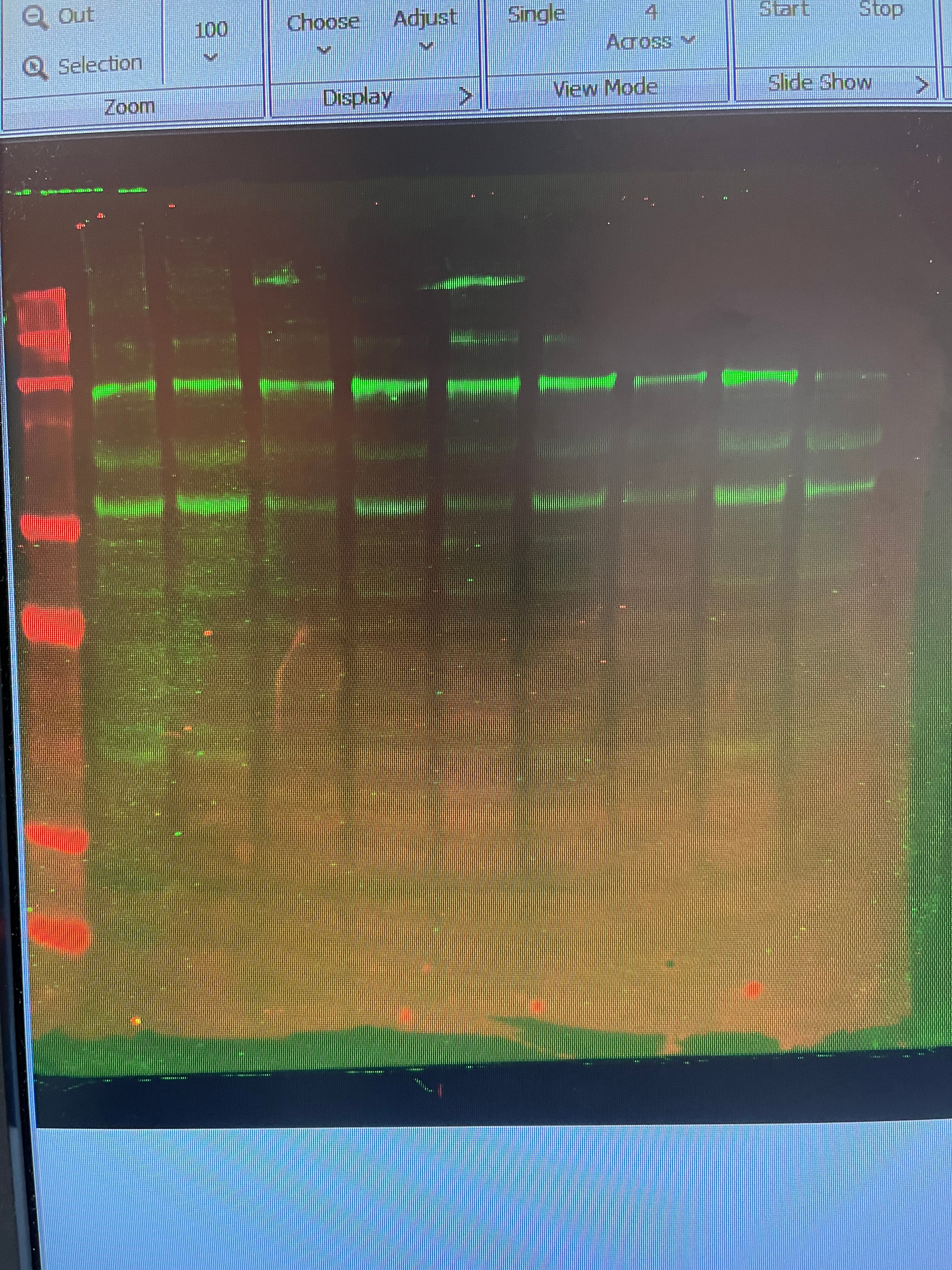 |
FH CHAO (Verified Customer) (03-31-2022) | Multiple bands may be due to different post-translational modifications
|
